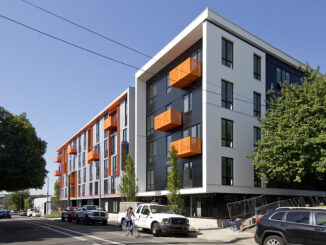
Realtor.com reported Thursday that the median rent price hit $1,827 in April.
The relentless rise in the cost of rent continued in April with the 14th consecutive month of record setting prices.
Realtor.com reported Thursday that the median rent price hit $1,827 in April, highlighting the affordability struggles reported by renters.
“April data illustrates the perfect storm of supply and demand dynamics behind the continued rent surge, from a low number of available rentals to higher for-sale housing costs forcing many would-be buyers to rent for longer than planned,” Realtor.com Chief Economist Danielle Hale said. “Renters are being left with few options but to meet higher rents and, in some cases, even offer above asking – whether they can afford to or not.”
Hale said the latest Avail survey shows rents are not only maxing out renters’ housing budgets but are the biggest strain on their overall finances, even as inflation drives up expenses across the board.
“For renters trying to stay on budget, making a list of must-have features is key and using a tool like the Realtor.com Rentals app can help you find (and stick to) your parameters,” Hale said.. “This will be especially important as, if recent trends continue, we expect the typical U.S. asking rent to eclipse $2,000 by August.”
According to the report, which was based on median rents in the country’s 50 largest markets, the median rent for a studio was $1,500, a 17.2% increase over a year ago. One bedroom units were at $1,679, a 15.7% increase from last April. Rent for two bedroom units stood at $2,062, a 16% increase.
The report showed that studio apartment rents were up double digits in all 10 of the biggest tech hubs, led by: New York City (29.1%), Boston (+27.4%) and Austin, Texas (+25.0%).
The report also noted that the five large markets that posted April’s biggest overall rental price gains year-over-year were in the Sun Belt: Miami (+51.6%); Orlando, Fla. (32.9%); Tampa, Fla. (27.8%); San Diego (25.6%); and Las Vegas (24.8%).
The smallest median increases were in the following cities: Pittsburgh (4.2%); Detroit (4.5%); Minneapolis (5.5%): Buffalo (7.5%); and Hartford (7.5%).
The Avail survey also found that renters are struggling to keep up with the increased costs of housing. Among renters surveyed in April, 66.1% said higher rents and related household costs are their top cause of financial strain – ahead of other expenses like food and groceries (57.3%) and auto and transportation (50.8%). Higher rents are also limiting renters’ ability to save, with more than three-quarters of renters (76.1%) saving less each month than at the same time last year. The typical household surveyed reported being able to save just $50 each month.
Of respondents whose rents have gone up on their current unit, 72.9% are considering a move to a more affordable rental. However, lower-cost options are dwindling, with renters who moved in the past year typically paying higher rents ($350) than they did previously. Those who are staying put are trying to cut costs, most commonly on entertainment (67.1%) and food and groceries (62.3%).
Additionally, trends among surveyed landlords indicate that renters aren’t likely to see relief any time soon. Nearly three-quarters of landlords (72.1%) plan to raise the rent of at least one property this year, up from 65.1% in the January survey.
Source: Nationalmortgageprofessional.com



